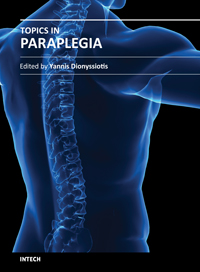Author:
Farhad Abbasi and Soolmaz Korooni Fardkhani
Year published: 2014

ISBN/ISSN: 978-953-51-1621-9
Abstract:
Paraplegia or paralysis of lower extremities is caused mainly by disorders of the spinal cord and the cauda equina. They are classified as traumatic and non traumatic. Traumatic paraplegia occurs mostly as a result of traffic accidents and falls caused by lateral bending, dislocation, rotation, axial loading, and hyperflexion or hyperextension of the cord. Non-traumatic paraplegia has multiple causes such as cancer, infection, intervertebral disc disease, vertebral injury and spinal cord vascular disease [1, 2]. Although the incidence of spinal cord injury is low, the consequences of this disabling condition are extremely significant for the individual, family and community [3]. A spinal cord injury not only causes paralysis, but also has long-term impact on physical, psychosocial, sexual and mental health. The consequences of spinal cord injury require that health care professionals begin thinking about primary prevention. Efforts are often focused on care and cure, but evidence-based prevention should have a greater role. Primary prevention efforts can offer significant cost benefits, and efforts to change behavior and improve safety can and should be emphasized. Primary prevention can be applied to various etiologies of injury, including motor vehicle crashes, sports injuries, and prevention of sequelae of infectious diseases and prompt and correct diagnosis and treatment of infections involving spinal cord and vertebrae [4]. Infections are important causes of paraplegia. Several infections with different mechanisms can lead to paraplegia.
Open access book: https://www.aspergillus.org.uk/wp-content/uploads/2016/05/46002.pdf
DOI Book: 10.5772/56989
